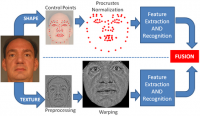-
Easing integration burdens of U.S.-born children in Mexico
About 550,000 children born in the United States are currently living in Mexico because their parents had been deported or voluntarily repatriated themselves (since 2010, the United States has deported 1.4 million Mexicans). These children face many hurdles – legal, social, cultural, linguistic, educational – trying to integrate themselves into life in Mexico. The U.S. and Mexican governments have reached an agreement on a plan to ease bureaucratic obstacles blocking these children from gaining access to health and education.
-
-
More than 800 ineligible individuals granted U.S. citizenship owing to incomplete fingerprint records
U.S. Citizenship and Immigration Services (USCIS) granted U.S. citizenship to at least 858 individuals from special interest countries — individuals who had been ordered deported or removed under another name. DHS IG says that this happened because neither the digital fingerprint repository at DHS nor the repository at the Federal Bureau of Investigation (FBI) contains all old fingerprint records of individuals previously deported. Currently, about 148,000 fingerprint records of aliens from special interest countries who had final deportation orders or who are criminals or fugitives have yet to be digitized.
-
-
Germany's Migration Office failed to detect forged passports
Critics say that Germany’s Federal Migration Office (BAMF) has not resolved severe security flaws which resulted in officials failing to detect counterfeit passports used by refugees entering the country. The attorney general for the state of Brandenburg, Erado Rautenberg, is now seeking to seize around 18,000 records from BAMF. Fake passports were seized in the southern German state of Bavaria. What is troubling security agencies is the fact that the passports were previously determined to be legitimate by the asylum office. Some 3,300 more passports are also being reanalyzed in the north-eastern state of Mecklenburg-Western Pomerania.
-
-
Protecting privacy in genomic databases
Genome-wide association studies, which try to find correlations between particular genetic variations and disease diagnoses, are a staple of modern medical research. But because they depend on databases that contain people’s medical histories, they carry privacy risks. An attacker armed with genetic information about someone — from, say, a skin sample — could query a database for that person’s medical data. Researchers describe a new system that permits database queries for genome-wide association studies but reduces the chances of privacy compromises to almost zero.
-
-
Accessing a murder victim’s fingerprint-protected smartphone to help solve a crime
Last month, when the Michigan State University Police Department approached professor Anil Jain to see if he could access a fingerprint-locked deceased man’s smartphone to aid in a police investigation, Jain accepted the scientific challenge. On Monday, 25vJuly, it was mission accomplished – Jain and his team unlocked the phone.
-
-
Separating the DNA of identical twins
Since its first use in the 1980s — a breakthrough dramatized in recent ITV series “Code of a Killer” — DNA profiling has been a vital tool for forensic investigators. Now researchers at the University of Huddersfield have solved one of its few limitations by successfully testing a technique for distinguishing between the DNA — or genetic fingerprint — of identical twins.
-
-
How well do facial recognition algorithms cope with a million faces?

In the last few years, several groups have announced that their facial recognition systems have achieved near-perfect accuracy rates, performing better than humans at picking the same face out of the crowd. But those tests were performed on a dataset with only 13,000 images — fewer people than attend an average professional U.S. soccer game. What happens to their performance as those crowds grow to the size of a major U.S. city? Researchers answered that question with the MegaFace Challenge, the world’s first competition aimed at evaluating and improving the performance of face recognition algorithms at the million person scale.
-
-
CBP issues long-anticipated Biometric Exit Program RFI
Last Monday, the Department of Homeland Security (DHS) issued its highly-anticipated call to industry to share solutions for the Biometric Exit Program. The Request for Information (RFI), issued by U.S. Customs and Border Protection (CBP), explains that CBP intends to add biometrics to confirm when foreign nationals are departing the United States, in order to deter visa overstays, to identify criminals, and to defeat imposters.
-
-
The accuracy of the FBI’s face-recognition technology may be improved: GAO
The Department of Justice’s (DOJ) Federal Bureau of Investigation (FBI) operates the Next Generation Identification-Interstate Photo System (NGI-IPS) — a face recognition service that allows law enforcement agencies to search a database of over thirty million photos to support criminal investigations. The GAO examined the FBI’s face recognition capabilities, and the extent to which the FBI’s use of face recognition adhered to privacy laws and policies, and the accuracy of these capabilities.
-
-
Terrorist or criminal? New software uses face analysis to find out

Pulling a poker face means betraying no visible emotion, so that opponents cannot tell what you are really thinking. But a Tel Aviv startup’s face-profiling technology recently proved fairly accurate at predicting which four players were most likely to beat out forty-six other contenders in an amateur poker tournament. The company say that its technology, which analyzes faces shown in photos and videos and classifies them according to fifteen parameters predictive of personality traits and types, can help identify terrorists.
-
-
EU backs visa-free travel for Turkish citizens to EU zone
The European Commission has recommended visa-free travel in Europe for Turkish citizens. Turkey still has to meet some of the seventy-two conditions set by the EU. The deal must be approved by the parliaments of all of the EU twenty-eight member states before the 30 June deadline. The lifting of visa requirements for Turkey’s eighty million citizens has been a subject of intense debate among EU member states. Turkey threatened that if the EU and its member states failed to approve the visa deal, Turkey would withdrew from the refugee agreement it had reached with the EU in March.
-
-
Hair analysis is flawed as a forensic technique
Since 1989, seventy-four people who were convicted of serious crimes, in large part due to microscopic hair comparisons, were later exonerated by post-conviction DNA analysis. A new article highlights the statistical failings of microscopic hair analysis in criminal investigations, noting that more than twenty characteristics can be used to describe or identify a single hair, but many are subjective.
-
-
El Paso doesn't want ID as "sanctuary city"
An El Paso-based immigrant rights group could see its hopes for a municipal ID card dashed after leaders there determined that issuing the card might prompt immigration hardliners to label the town a “sanctuary city.”
-
-
Texas’s E-Verify law operating under honor system
After former Gov. Rick Perry issued an executive order in December 2014 mandating the use of E-Verify for state agencies, some lawmakers noted the directive lacked a mechanism to ensure compliance. But more than nine months after Gov. Greg Abbott signed a separate E-Verify bill, some of those gaps still exist.
-
-
U.K. to destroy biometric information of 45 terror suspects due to botched paperwork
British security agencies will have to destroy fingerprints and DNA of forty-five terror suspects because the police retained the biometric samples longer than the law allows. The law does allow the police to keep biometric information of terrorism suspects indefinitely, but certain paperwork must be completed within a certain period of time to allow that, and if the paperwork is not completed, the samples must be destroyed. A new report reveals that Britain holds biometric information and materials on nearly 8,000 suspects.
-
- All
- Regional
- Water
- Biometrics
- Borders/Immig
- Business
- Cybersecurity
- Detection
- Disasters
- Government
- Infrastructure
- International
- Public health
- Public Safety
- Communication interoperabillity
- Emergency services
- Emergency medical services
- Fire
- First response
- IEDs
- Law Enforcement
- Law Enforcement Technology
- Military technology
- Nonlethal weapons
- Nuclear weapons
- Personal protection equipment
- Police
- Notification /alert systems
- Situational awareness
- Weapons systems
- Sci-Tech
- Sector Reports
- Surveillance
- Transportation
Advertising & Marketing: advertise@newswirepubs.com
Editorial: editor@newswirepubs.com
General: info@newswirepubs.com
2010-2011 © News Wire Publications, LLC News Wire Publications, LLC
220 Old Country Road | Suite 200 | Mineola | New York | 11501
Permissions and Policies
Editorial: editor@newswirepubs.com
General: info@newswirepubs.com
2010-2011 © News Wire Publications, LLC News Wire Publications, LLC
220 Old Country Road | Suite 200 | Mineola | New York | 11501
Permissions and Policies
